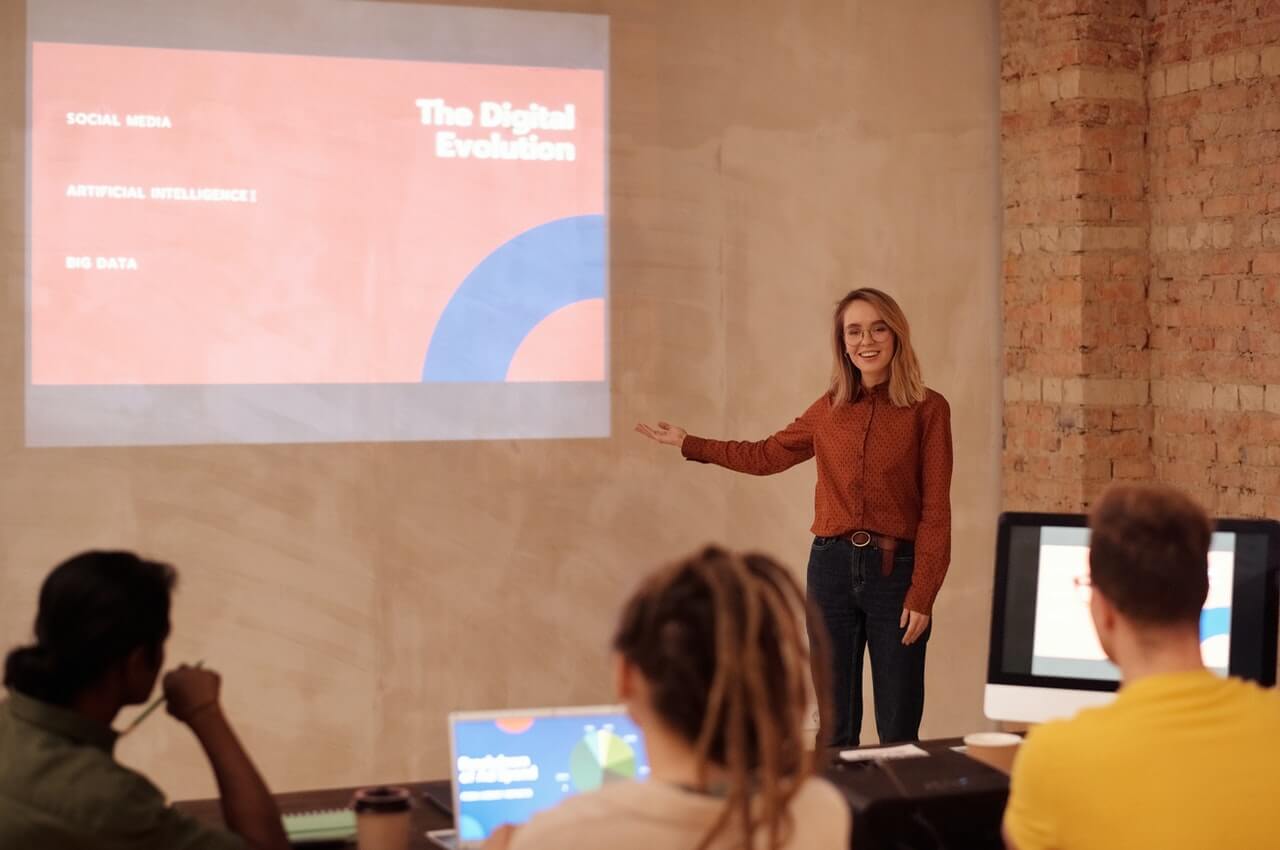Michelle Rosenbloom with the 3Leaf Group is a marketing professional. Now, what she is marketing is the Netflix(TM) of training. The wave of the future. She has been involved in creating a “lean, mean, learning machine.” But there is more to it than marketing when it comes to a savvy training professional or manager who can peruse the options and provide them to the right audience. I decided to let Michelle make her case here because this is where we will see a lot of training in the near future. I believe in the strong context between the trainer who knows most about learning and how to apply it and the products that might be sold where the seller has a sells pitch, not necessarily a training pitch. It becomes a matter of price.
Having said that, I have no intention of diminishing what Michelle says in the blog below, but as trainers, it is up to us to be aware of what is out there and the trends; it is also up to managers to make up their minds based on their bottom line. What she says about the multi-generational learners may very well be true. Check out the statistics for yourself.
Multiple Modalities for a Multi-Generational Workforce
Question: What do current and past generations have in common in the workplace?
Answer: Not a whole lot.

The term “generation gap” seems to be buzzing in the workplace – especially when it comes to technology. If you are struggling to engage, train, or simply manage a cross-generational workforce, you’re not alone. As trainers, we need to hear our audience’s needs and put forth genuine effort to orchestrate training materials that speak to their learning preferences.
Who makes up today’s multi-generational workforce? Let’s take a look:
- Millenials (Generation Y): Generally refers to individuals born between 1977-1998. This group is relatively new to the workplace, highly technical, and team oriented.
- Generation X: Generally refers to individuals born between 1965-1976. This group is highly independent, tolerant of technology, and resilient and adaptable to change.
- Baby Boomers: Generally refers to individuals born between 1946-1964. These individuals are motivated, hardworking, but skeptic of utilizing modern-day technology in the workplace.
How do we meet these generational needs?
On one hand, if it’s technical – it works. At least that’s the case of the Millenials, our current generation of 20-somethings who have substituted oxygen for electronic devices and personal interaction with 4-G internet speed. On the positive side, these young professionals crave engagement. And we all know engaged employees ensure productive outcomes. According to a meta-analysis study conducted by Gallup Management Journal, engaged employees generate 12% higher customer advocacy, 18% higher productivity, and 12% higher profitability. I vote for engaged employees and I’m sure you would as well.
How would you most effectively train this group in an engaging manner? Put them in front of a screen and utilize the most effective mode of training possible for these tech-savvy individuals: E-Learning. Why?Because it speaks to them; it’s engaging; it’s their language. Not to mention the number of benefits E-learning offers a young workforce including real-time collaboration, personalized learning, and around the clock access to training materials.

Note: This method is not intended as “taking the easy way out.” Just because some employees choose a technical modality for learning, doesn’t mean they are completely off the “communication” hook. If you don’t feel comfortable letting the machine do all the work, supply hard copies of the training materials. If you have the time and space, incorporate the training module with a face to face follow up discussion. At the very least, mandate a real-time collaboration discussion to make sure the session was well received.
….But what about the other half? The 40, 50, 60 year olds who still make up a majority of our country’s workforce? Are they as eager to download a 52 MB training module or video chat with the Director of Training and Development? Most likely not. In fact, according to a 2009 LexisNexis® Technology Gap Survey, a staggering 75% of Baby Boomers believe that Personal Digital Assistants (PDAs, BlackBerries, Palm Treos) mobile phones, and laptops contribute to a decline in proper workplace etiquette. For a generation that values face time (one-on-one interaction, not the Apple feature) and hard-copy materials, traditional training methods are probably most effective.

So, where’s the happy medium? Looking to neutralize a multi-generational war-zone? Here’s your weapon of choice: Offer multiple modalities that cater to your employees’ preferences. Invest in a multi-platform training solution; one that ranges from books and CDs to downloadable materials and E-learning modules. Cover the gamut. Print up hard copies, assign readings, offer audio solutions. OR – join the workforce of 2012 and utilize a robust training database that offers customized downloadable materials that speak to both the trainer and trainee’s needs.
I can already hear the skeptics chirping in my ear….
What’s that?
You’re concerned about the MONEY. You’re thinking, “Congratulations, we’re a multi-generational –multi-modality lean, mean, training machine. We’re willing to offer our employees a training solution that works for THEM. But how much is going to COST ME??”
Relax.
You can ABSOLUTELY invest in a multi-platform training solution that won’t break your bank. Finding a training system that offers an array of materials is KEY. Order hard copies – order CDs, order access to an online training database — all within one training system. If you are currently using multiple modalities but paying different vendors to do so, you’re not getting the most for your money. You can get a better deal by bulking a multi-media package to include books, CDs, hardcopy materials, AND online training database materials. There are economical solutions in taking this route such as paying-per-use or enterprise pricing options, depending on your company’s size and training requirements.
And by the way, if you’re not using multiple modalities you should be. You’re missing important training opportunities or possibly utilizing obsolete training methods that are not generating effective results. That’s what I call poor ROI (return on investment) if you ask me. If you’re willing to listen to your employees’ training needs and genuinely wish to engage them (which you should be) – using multiple modalities in the only way to do so. Click Here to hear about what others are saying regarding employee engagement, specifically in the E-Learning arena.
Want your employees engaged? Speak to their (technical) needs. That’s one way to make a multi-generational workforce happy – especially when it comes to training.
—
For more resources about training, see the Training library.
Thanks, Michelle, for offering your point-of-view and providing us information we are not all aware of. This certainly sounds like a great resource. I have a bit of an issue with the word “engage” as you use it here because I think word takes in a more than what a person “prefers” or learns best through a particular modality. Not all find same engagement tool for the same subject, and preferences change so this in my mind would not be universal. Just a thought.
So much for me. This a forum for differences and similarities, a forum to look at the fine points and generalities. I hope we’ve covered useful territory here. Disagree or want to put a whole different slant to things, you can do so here on comments or write to me directly. My website is available for other topics as well including theatre and communication topics. Layers as we say. Guest bloggers are welcome anytime. My new eBook is totally different from the many of the topics we deal with here because I am looking to the past or at least the practical to see where we may go wrong. It’s available from major retail eBook sellers as well as from Smashwords. It’s called The Cave Man Guide To Training and Development for those who wish to re-think a bit of what we do. Topics should be training related, but if you are interested in other business-related topics, check out the link at the top of the page. Happy training.
































